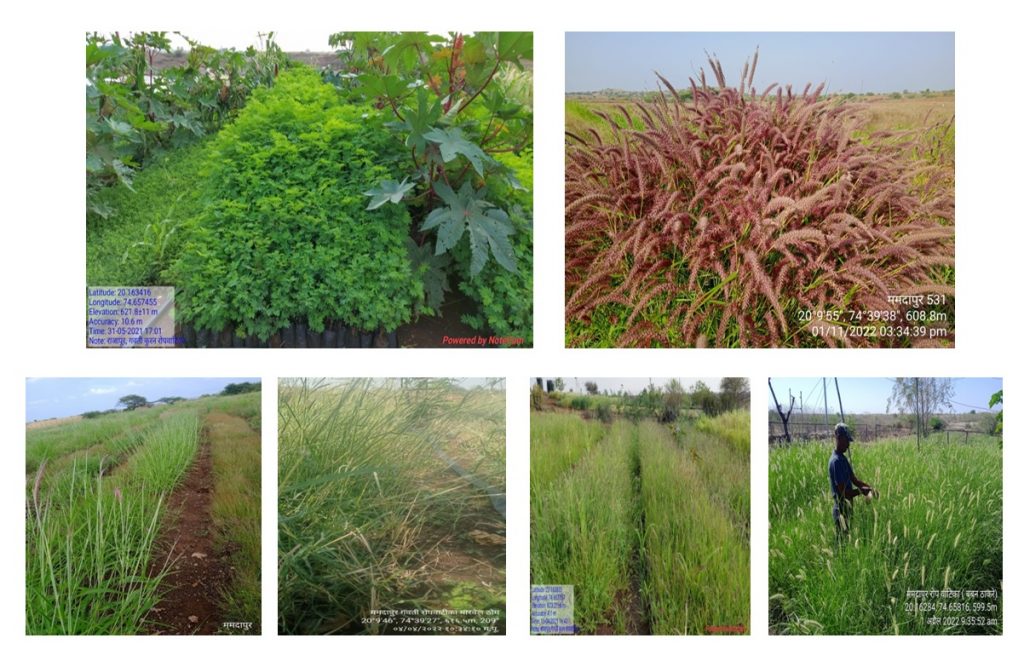Grasslands are common to any forest area, but the one in Nashik district of Maharashtra is a critical one. Why? Because it is located in an area which had seen a gradual decline in its eco-system, to losing it completely in 2018-19. Devoid of shrubs, plants and trees, the area became an arid land shunned by living species.
So it fell upon the shoulders of the Nashik Forest Department to take up the mammoth responsibility of restoring this land and turning it green once again. Accordingly, a grassland was developed in more than 300 hectare of area under the Mamdapur Conservation Reserve, for restoration of forest land, which is critical for bringing back herbivores.
Along with it, a grassland nursery is also being nurtured, the first in Maharashtra. The results are there for all to see, as not just herbivores but many new species are being noticed regularly in the area.
Indian Masterminds interacted with 2016 batch IFS officer Umesh Waware, the Deputy Conservator of Forest, and Dr. Sujit Nevase, ACF, to get more details about this green project.

GRASSLAND DEVELOPMENT
The grassland development programme was started under Maha-CAMPA scheme in 2018-19. In an initial study of the area, the forest department found out that due to forest fire and overgrazing, the grassland species had decreased and the species that have less importance for the eco-system had increased.
In no time, the over-grazing and the forest fires were controlled and local species like Anjan, Dhaman, Dongari, Marvel, Pawanya, etc., were planted. Side by side, V-shaped trenches were dug on the ground where various species of grasses were planted while in the surrounding areas, Dongari and other similar grass species were scattered in the form of seed balls, which resulted in tremendous growth.

The hard work bore fruit as a more than 300 hectare grassland has come up in the once arid land. However, the work has not stopped and this year, the expansion of the grassland to more than 150 hectares has already commenced.
One of the persons behind this green initiative is Dr. Sujit Nevase, who worked on developing the grassland during his tenure as the ACF of the Reserve. He said, “To develop the grasslands, the department first started a nursery in Mamdapur Conservation Reserve, which has now become the first grassland nursery in the state.”

THE NURSERY
The grassland nursery was developed under the Maha-CAMPA scheme, and it nurtures primarily 6 local species. Spread over two and a half hectares, it can produce 50 lakhs seedlings at a time and supply these to all over the state.
The importance of this nursery can be understood from the fact that now the state government has passed an order to develop it as a centre of excellence. After this, a research centre will also be established here and research work will commence on the varieties of the species available here.
Mr. Waware said, “Grassland seedlings are being supplied from this nursery to the entire state. This nursery is now playing the biggest role in grassland development by the state forest department.”

THE BENEFITS
The benefits of an improved grassland are many. First and foremost, it will hasten soil generation. Secondly, due to the lack of a grassland earlier, the eco-system was severely affected and only black bucks were left. But, now, many other species have started appearing.
Mr. Waware said, “Grassland is the basis of an ecosystem. It also improves the soil and its moisture condition.”

Principal Chief Conservator of Forest, Maharashtra, IFS Shomita Biswas lauded the efforts of Mamdapur Conservation Reserve.
She said, “This grassland has helped the eco-system a lot. The number of herbivores has increased phenomenally. It has further improved the soil and its moisture content. One should also see the way the roots of the grass are holding the soil and, thereby, arresting soil erosion. I would call it a successful experiment in developing propagules under controlled conditions.”


































